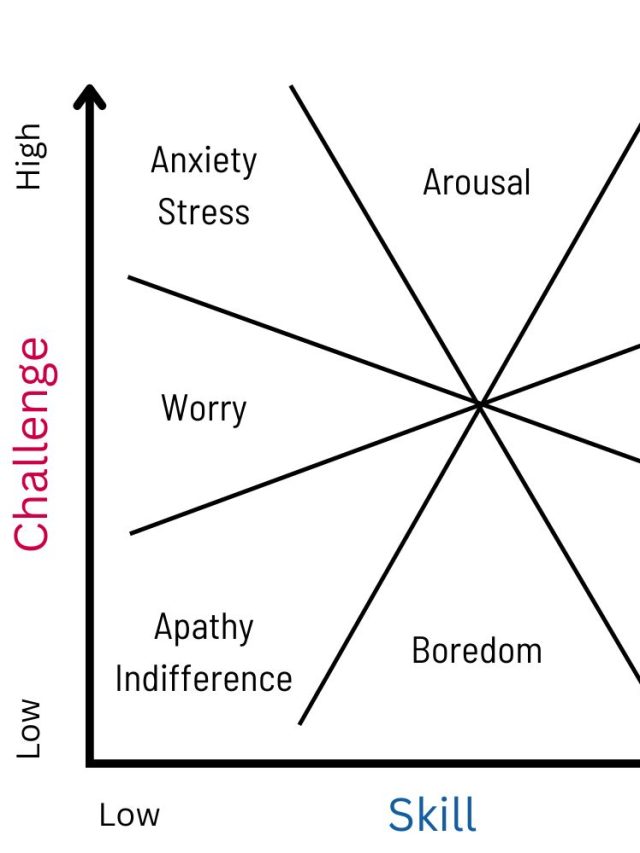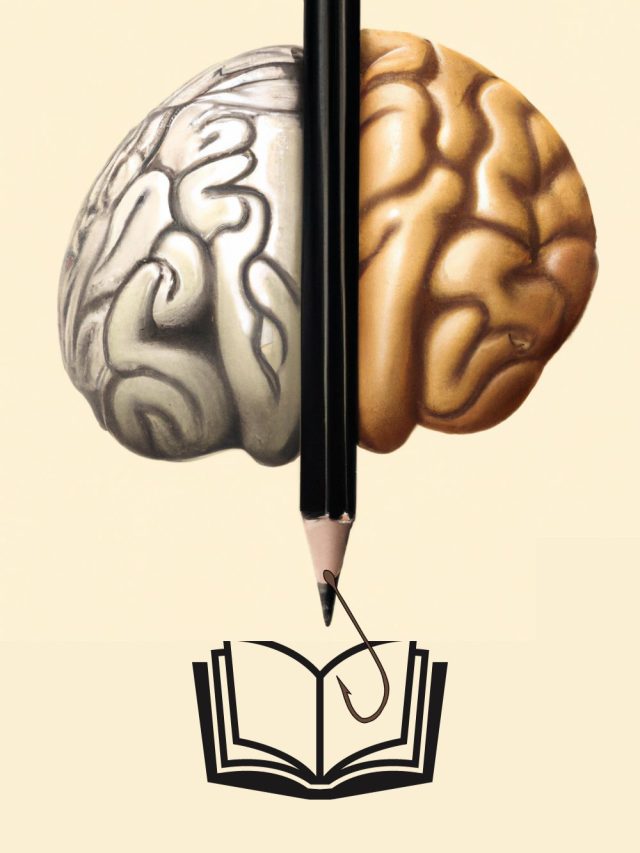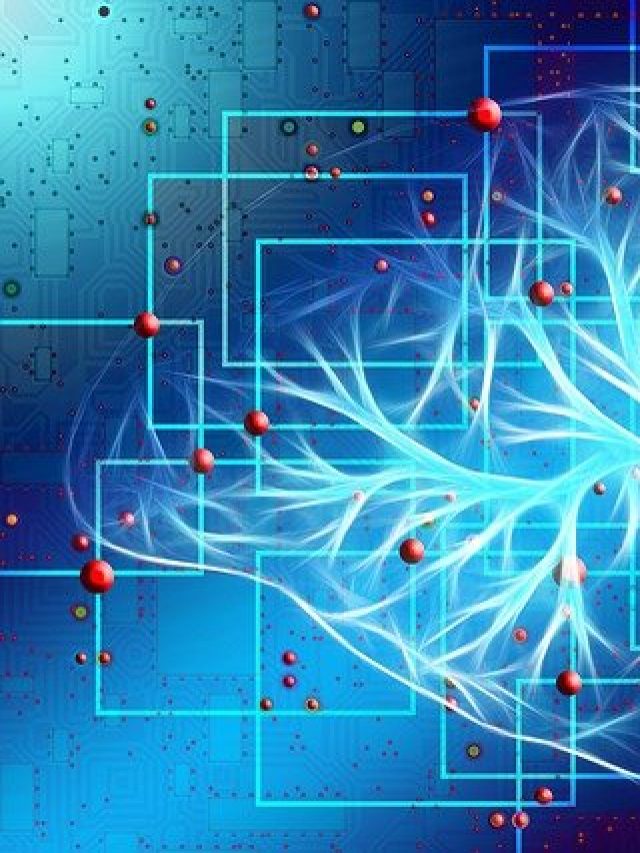Summary: We experience anger, an emotion based on the intent to cause harm, to bargain for better treatment from others. We have a welfare trade-off ratio with others. It describes how much others value us. If the ratio is low, we feel undervalued and get angry. We use anger as a mechanism to bargain for a higher welfare trade-off ratio (better treatment from others). Our anger comes in 2 stages. The first one is about fighting over an incident, and the second is negotiating to change others’ behavior by withdrawing benefits or threatening harm.
Anger is one of the more destructive emotions that most of us find problematic. Throughout history, anger, along with other emotions like greed and jealousy, have been declared as evil and the greatest barriers to achieving one’s full potential. For example[1], the Bhagavad Gita says “Lust, anger and greed, these three are the soul-destroying gates of hell” and a Chinese proverb goes “If you are patient in one moment of anger, you will escape a hundred days of sorrow.” The Bible speaks of anger as a gateway to sin; the verse James 1:20[2] states “Human anger does not produce the righteousness God desires.”
If it’s all bad, why did anger evolve in humans? Why do we feel anger? And what anger management tips can you use to do some damage control? Turns out anger is a powerful way to control people.
- What is anger?
- Triggers of anger
- The Recalibration Theory of Anger
- The 2 Stages of anger
- How anger can turn into aggression
- Why am I always angry, and why do I get angry so quickly about little things?
- Coping with anger: Anger management techniques and Anger control
- Differences in how people get angry
- Sources
What is anger?
Anger is a mental and physical state that emerges from the belief that someone has unfairly wronged you. It contains an intention to hurt others and use aggression to manage what hurt you in the first place. In other words, you experience a threat to something you value – you feel attacked and then prepare to fight and protect it. This tendency may restore a sense of safety and security. Anger is often directed toward particular people but it can be directed toward objects, unknown people, and even yourself. Psychological theories[3] consider anger (or rage) as a negative high-arousal emotion that evolved via natural selection[4] to display an ability to hurt, intimidate, and dominate[5].
Evidence suggests that congenitally blind children[6] also demonstrate typical angry expressions and babies as young as 7 months[7] can show anger. Anger is universal across cultures[8], and a majority of animals have mechanisms to deal with conflicts[9]. Evidence also shows that all mammals[10] experience anger. Humans have a more sophisticated system for “anger control” – the ability to regulate (inhibit, suppress, display) anger after provocation or hurt, which makes it an effective psychological tool.
Signs of anger and aggression: Anger puts your body and mind[11] in a “fight” mode (as opposed to flight or freeze), which involves tightening of muscles, narrowed and biased thinking, clenched jaws, clenched fists, reddened face, aggressive stances, and typical angry facial expressions. Facial muscles[12] that change shape during anger evolved to make people look stronger. However, this display of formidability isn’t necessarily a starting point for aggression. Aggression is a relatively rare[13] type of forceful behavior that occurs in the anger state.

Most of us experience reactive anger/aggression when an incident puts a burden on us, we lose something, or we realize that someone neglected us when they shouldn’t have. Anger also emerges from frustration and unmet expectations from both people and objects. Contrary to what we see in fear and phobias, angry people and their targets are motivated to approach each other[15]. The downside to anger is that it is psychologically and socially costly and we use it even when we cannot afford it. That’s why we need to learn how to manage anger. The upside to anger is that it can help you improve mutual care, resolve conflicts, and foster compassion by redefining a relationship.
According to Aaron Sell[16](a leading anger researcher) et al., assumptions about others’ motivations and beliefs that feel unfair to the angry person trigger anger. The nature of anger is itself designed to gather attention. Then there is information exchange with pronounced changes to voice and tone which makes the words more significant – exaggeration is also aimed to hurt and make a point. Sometimes there is aggression which is usually verbal and not physical. And in typical scenarios, an apology can defuse the situation because the angry person is likely to be treated better and with more mindfulness after the apology.
Researchers say[17] “Patients with anger management problems tend to be unreflective patients who externalize blame for their problems with impulse control.” and they acknowledge that there is an empathetic (theory of mind) side to anger management.
Triggers of anger
Aaron Sell[18] studied a vast set of anger-based conversations and summarized 12 typical triggers. The following scenarios trigger anger.
- You have to pay a huge price for a very small benefit. Related: Heaven’s reward fallacy.
- Others have insulting beliefs about you like thinking you are stupid or incapable.
- Others make important decisions for you without consulting you.
- Someone who is supposed to be a partner sets very different goals like moving cities, changing careers, how time is spent, etc.
- You feel socially rejected and jealous.
- Others don’t value your company.
- Taking a rival’s side and disrespecting a team member.
- Others lack of empathy. Related: How to train your empathy.
- Lack of self-disclosure or someone important hiding information after many opportunities to share.
- Others’ arrogance and claims of superiority.
- Someone close forgets important details about you.
- Someone lies, deceives, or manipulates you for their agenda or personal gain.
The Recalibration Theory of Anger
Drawing examples from animal studies, human evolution, and social psychology, researcher propose a robust theory of anger that explains most of our angry behavior. It explains why we feel angry, why we behave the way we do when we are angry, and how we manage our anger. Researchers call this the Recalibration theory of anger[19].
Simply put, The Recalibration Theory of Anger states that an anger system evolved in humans to bargain for better treatment from others. In other words, we get angry because we are dissatisfied with how we think others treat us, and anger functions as a way to change that treatment (or re-calibrate others). Effectively, we use anger to get what we want – tantrums & acting out included. Our anger comes as a response to someone not giving importance to our welfare. Since it is a belief, it can be irrational. Anger doesn’t force others to change, it is merely an attempt to negotiate a change. This theory gives credence to the idea “behind all anger lies hurt and disrespect.”
Why do we get mad at loved ones? Because anger functions as a mechanism to demand better treatment by bargaining for a change in others' behavior. Share on XResearchers call this interpersonal importance The Welfare Trade-off Ratio. It describes the cost person A imposes on person B for personal benefit. People generally start with a low welfare trade-off ratio where they will impose any cost on others for minor gains, like being selfish. As relationships build, the welfare trade-off ratio increases. When someone perceives it to go down again, it triggers anger.
An example of a low welfare trade-off ratio is “You don’t care about me enough.” or “You are putting a filled coffee mug on my laptop for convenience.” An example of high welfare trade-off ratio is “I’m ok with how much importance you place on me.” or showing common courtesy in a shopping mall. The welfare trade-off ratio answers the question – “How much are you willing to consider my welfare, and what price will you pay for it?” A low trade-off ratio usually angers people because anger is an evolved mechanism to increase the welfare trade-off ratio. A low welfare trade-off ratio occurs when someone handles your phone poorly and drops it but acts extra careful with their own while taking photos.
- If your friend breaks your laptop due to carelessness (low welfare trade-off ratio), your anger would probably be high, but if it broke in an accident (welfare trade-off ratio unknown), your anger would be less intense.
- If you are on hold at a shopping counter because the cashier is busy chatting with others (low welfare trade-off ratio), you might feel more enraged than when he apologizes and requests you to wait to attend to an urgent phone call (high welfare trade-off ratio).
The welfare trade-off ratio can also be seen as a perceived cost-benefit ratio. A low ratio usually means people will selfishly put a burden on others for personal gain. When it comes to assessing your own welfare, the cost of your welfare is important. If you feel you are treated poorly but the cost of treating you well is low, it could amplify anger. If someone’s thoughtfulness benefits you but they have to pay a high price for it, you’d be less enraged and even grateful; unless you only consider your own welfare at their expense. The additional effort you have to put in because someone else is lacking in ability/motivation could encourage cost-driven anger. Higher costs lead to higher anger. The key point here is that the welfare trade-off ratio is assessed and evaluated in a context. It is part cognitive and part behavior.
Tip: Reappraising thoughts and regulating emotions that indicate low welfare often helps to diffuse anger.
The theory describes 2 stages of anger.
The first stage of anger involves initiating anger and interrogating the other person over the conflict. The second stage of anger involves bargaining, negotiating, threats, and a display of aggression after learning that the welfare trade-off ratio was low. Together, both of these stages attempt to re-calibrate someone else’s behavior in your favor. The angry person’s end goal is usually to modify someone else’s behavior (not inflict harm) and anger may sustain until that behavior is changed or the welfare neglect is no longer important. This is one of the reasons why time heals anger. The farther you go into the future, the more distant the emotions become and distant emotions have lower significance.
Note: This theory of anger does not fully explain anger felt in grief.
The 2 Stages of anger
Stage 1 of anger: Interrogation and insults
The angry individual first displays anger and hostility to a target individual who had supposedly neglected the angry individual’s welfare. The angry person then interrogates and fights over the event that triggered the anger. This stage typically involves insults, blaming, passive-aggressive remarks, information-seeking questions, hurtful statements, and rhetorical questions like “What is wrong with you?” and “Do I look stupid to you?”
When the target individual reveals more information about the anger-inducing event, the angry person often learns that his welfare was indeed neglected. This leads to an escalation in anger and the angry person transitions into the second stage of anger.
Exiting stage 1: Occasionally, upon interrogation and initial displays of anger, the angry person learns that the target did not really ignore the welfare but made a reasonable trade-off between what the angry person could lose (welfare and importance) and the target could gain (avoid some loss or gain some benefit). If this trade-off is justified, the angry person cools down.
Example: You are with your partner for just an hour after a long gap. Your partner spends 10 minutes talking on the phone. You may feel anger is warranted. You might conclude that your partner doesn’t care about you enough. You then learn that the phone call was about a major work emergency. Suddenly your anger dissipates because you realize it was not about your welfare. Not everyone recognizes this when they are angry. So a number of avoidable interpersonal conflicts turn toward other instances of ignored welfare. A part of this sustained anger and shifting of gears is to preserve one’s angry mental status.
Another common exit strategy is to demand an apology and request a promise to not neglect welfare or confer heavy costs on the angry individual. Perhaps these tips on how to apologize might help.
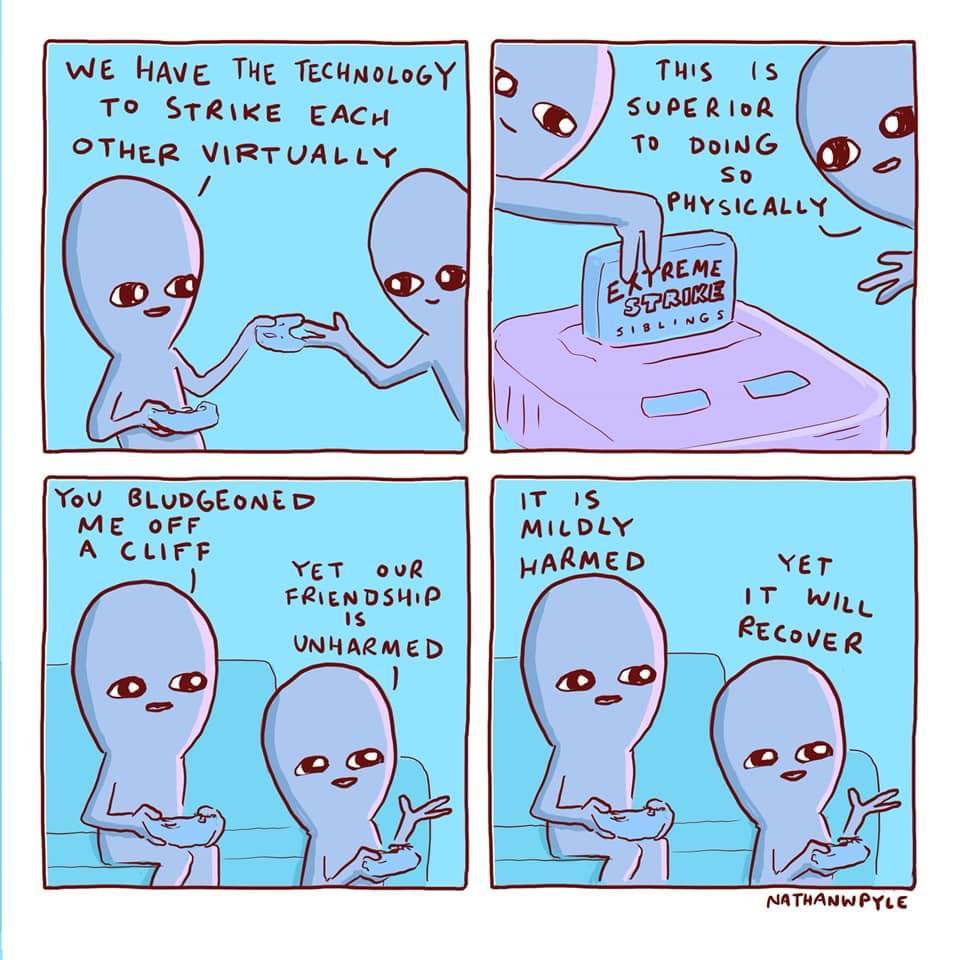
Stage 2 of anger: Bargaining for better treatment
After the revelation/confirmation of the belief, “you disregarded my welfare,” anger escalates. The angry individual begins to threaten and impose a cost on the target individual. These threats, ultimatums, and costs may be the withdrawal of benefits such as break-ups, breaks, and no sex or they can be declarations of harm such as hitting, tit-for-tat, verbal abuses, and insults. People directly use these behaviors to change the welfare trade-off ratio. That means angry behaviors have evolved to bargain for a change in others’ behavior.
An important nuance of the recalibration theory is that it explains why we rarely inflict optimal harm on others. The goal of aggression in anger is to negotiate using threats – “If you don’t change this, I will harm you.” When in stage 2, people break things, hit the wall, hit the arm/leg, slap, and even fling items on body parts, but they will rarely cause irreparable damage in one go. Angry people won’t necessarily inflict more severe harm like stabbing or replacing salt with sugar because extreme aggression/violence kills the chances of receiving better treatment. Anger involves empathy to an extent. Just enough to understand how to bargain for better treatment and predict the outcome of displays of anger. People don’t always get angry only to hurt others; they get angry to negotiate a change in behavior until the target accepts it. That could prolong the duration of anger.
Exiting stage 2: People often let anger escalate to try and get what they want because it worked for them before – anger becomes rewarding. This is analogous to acting out and is commonly seen in both children and adults. A healthy outcome of attempts to recalibrate others is that some displays of anger do lead to mutually beneficial welfare trade-off ratios. So the outcome of a fight leads to a commitment to change behavior that the target person agrees to. The cost of change that the angry person inflicts on the target person is deemed reasonable.
Self-harm is another tactic people could use to verify if they have a low welfare trade-off ratio with others – Does the other person care enough to stop you from hurting yourself? Does my self-harm feel like a loss to others? This pattern of behavior also converts into a manipulation tactic to negotiate for better treatment.
Not all interpersonal conflicts involving the display of anger lead to a mutually negotiated behavior change. It can be used as a tool for manipulation once the target submits or yields to the pressure. Such a display of dominance to force someone else to change can lead to unhealthy relationships for both. The welfare trade-off ratios can reverse to now completely favor the angry person and heavily tax the target. Occasionally, this inversion could lead to a back-and-forth of anger.
We get angry to change others' behavior. At its core, we believe our welfare is neglected. Stage 1 anger leads to questioning and insults. Stage 2 anger uses threats and harm to bargain for better treatment. Share on XHow anger can turn into aggression
Aggression is a goal-directed intentional behavior meant to hurt others who want to avoid that harm. The difference between anger and aggression is that anger is an emotion and a mental state and aggression is intentional behavior that causes harm. If the harm is extreme, aggression is labeled as violence. The cognitive neoassociation theory[20]of aggression says aversive situations (frustrations, punishment, abuse) create negative emotions like anger and these negative emotions trigger a fight or flight response by activating/priming an association of behaviors and memories. The fight response is connected to anger-based associations of memories and motor responses related to approaching the target with force. The flight response is connected to fear-based associations of memories and motor responses related to moving away from the target. In effect, fight or flight primes angry behavior or fearful behavior. If the memories and behavior/motor associations triggered by negative emotions are fight responses, one is likely to get aggressive. These aggressive behaviors[21] can be learned through observation, or reinforced by past instances of avoiding negative situations or gaining rewards successfully.
Why am I always angry, and why do I get angry so quickly about little things?
The first reason could be that you feel people have mistreated you or they have neglected your welfare for so long that your baseline level of anger is high and generalized – you may even have a habit of ruminating anger and revisiting related memories. Constant anger (chronic anger) may indicate a deep-seated dislike for others’ behavior and a continuous fight to change it in your favor because you believe it is unfairly poor. This may go alongside low tolerance for other people’s behavior, which you can no longer change or control.
When someone asks questions that imply high importance for your welfare, they can induce anger simply because you no longer want others to continue any behavior you aren’t motivated to entertain. One common reason is that people don’t want to deal with their welfare due to a history of difficulties in managing it (common for depressed people). Anger, irritability, and frustration is also a common symptom of stress, depression, and uncertain circumstances.
The second reason could be that you have learned, through experience, upbringing, and examples, that showing anger helps you get what you want from others.
A third reason is that anger-in (suppressing it) can increase anger-out (expressing it) if you have high anger rumination[22] (pre-occupation with angry feelings).
A fourth reason could be entitlement[23]. As per the theory, bad luck should not elicit much anger because luck doesn’t care how it affects others so there is no welfare trade-off ratio. But entitlement could increase feelings of the universe owning you luck. So bad luck, through entitlement, could create a notion that the universe is neglecting your needs or welfare, and that triggers anger.
A fifth reason is that you put in the effort toward something but you aren’t receiving the reward[24] for it. If you are unable to change your behavior once you realize the reward isn’t coming, the anger amplifies with each instance of not seeing your expected reward. Here, the way to reduce anger is to stop or change the behavior that is failing to bring you the expected reward and try a new approach to get the same reward. For example, if yelling at someone isn’t getting them to treat you better, try encouraging all behavior you like first. The belief that all your effort, even if they fail to bring rewards, must be rewarded in some way is called “heaven’s reward fallacy.“
Chronic anger is a core theme in a number of psychological illnesses[25] like intermittent explosive disorder, bipolar disorder, and borderline personality disorder.
Coping with anger: Anger management techniques and Anger control
Anger management is hard because you can fail to modify others’ behavior or persuade them to value you more. Other’s may pay a hefty price to consider your welfare above their own. So it’s important to know how to manage anger and reduce the price others have to pay. Here are 10 ways to control/reduce your anger and resolve it.
How to manage other people’s anger
Based on the recalibration theory of anger, there are 2 easy strategies that can help us manage anger in others.
- Identify and address the underlying behavior the angry person expects from you. Feelings of anger are just mechanisms to persuade you to consider the angry person’s welfare. Instead of fixating on anger, focus on what price you can afford to pay for their welfare and how you can reach a reasonable middle ground.
- Tolerate the anger spell till they reveal the underlying disappointments and hurt. Then, re-negotiate what you can do in your capacity to help others feel they are valued.
How to manage your anger
- Withdraw yourself from the situation and wait till you can communicate your hurt/disappointment/expectation healthily so you can attempt to explain what you didn’t like about their behavior. Tell the target of anger that you will get back to the core problem later.
- Divert your mind with physical maintenance. Wash your face, brush your teeth, change your clothes, or even stretch your body as a diversion from your thoughts.
- Use empathy to understand the burden of anger on others and how they might deal with your demands.
- Use the 4–7–8 breathing technique – Inhale for 4 seconds, hold for 7, exhale for 8. A few times is enough. Regular deep breathing is also fine if this is too hard. Try a 3–6–5 routine. Use a timer and watch the seconds move. Structured deep breathing is an excellent way to calm down and reduce perceived pain.
- Use the 5–4–3–2–1 sensory grounding mindfulness technique. Notice 5 things you can see, 4 things you can hear, 3 things you can touch, 2 things you can smell, 1 thing you can taste. Use this to snap out of it.
- Listen to music, close your eyes, and get into the groove. Of all the possible things we can do, only music has the power to regulate every aspect of our body and mind, and heavy metal may be perfect for anger management. Anger consumes all of “you”, so use music to diffuse it.
- Avoid venting your emotions on the target. Avoid letting it all out with a bang. Don’t try to release your anger through aggressive actions. These behaviors amplify anger, not reduce it. Catharsis[26] is often not the solution, nor is venting[27] on social media. However, honest conversations can help.
- Use distractions to let your mood stabilize. Once your mood is better through distractions like music, art, work, phone calls, or a TV show, focus on the main problem with a problem-solving mindset. Affirm positive emotions so there aren’t too many hurt feelings.
- Engage your body in dance or exercise. Do any activity that disconnects your body from your mind because anger binds your mind and body in a specific state. Anger is a complex emotion built out of aggressive intimidation “stances” – tightening of muscles, closing of fists, locking eyes, clenched jaws, etc. When you disconnect your body, you kill the feedback channels between your biology and thought processes that feed each other.
- Focus on what is behind the anger & fear – is there any insecurity, disappointment, personal problem, are you misattributing another issue to anger? Communicate that instead of lashing out.
- If you are perpetually angry, think about what you do not want to lose. Anger can strain all sorts of relationships, compromise physical health, mental health, reduce productivity, and even reduce self-respect and others’ respect for you. Focus on what you might lose if you continue your anger.
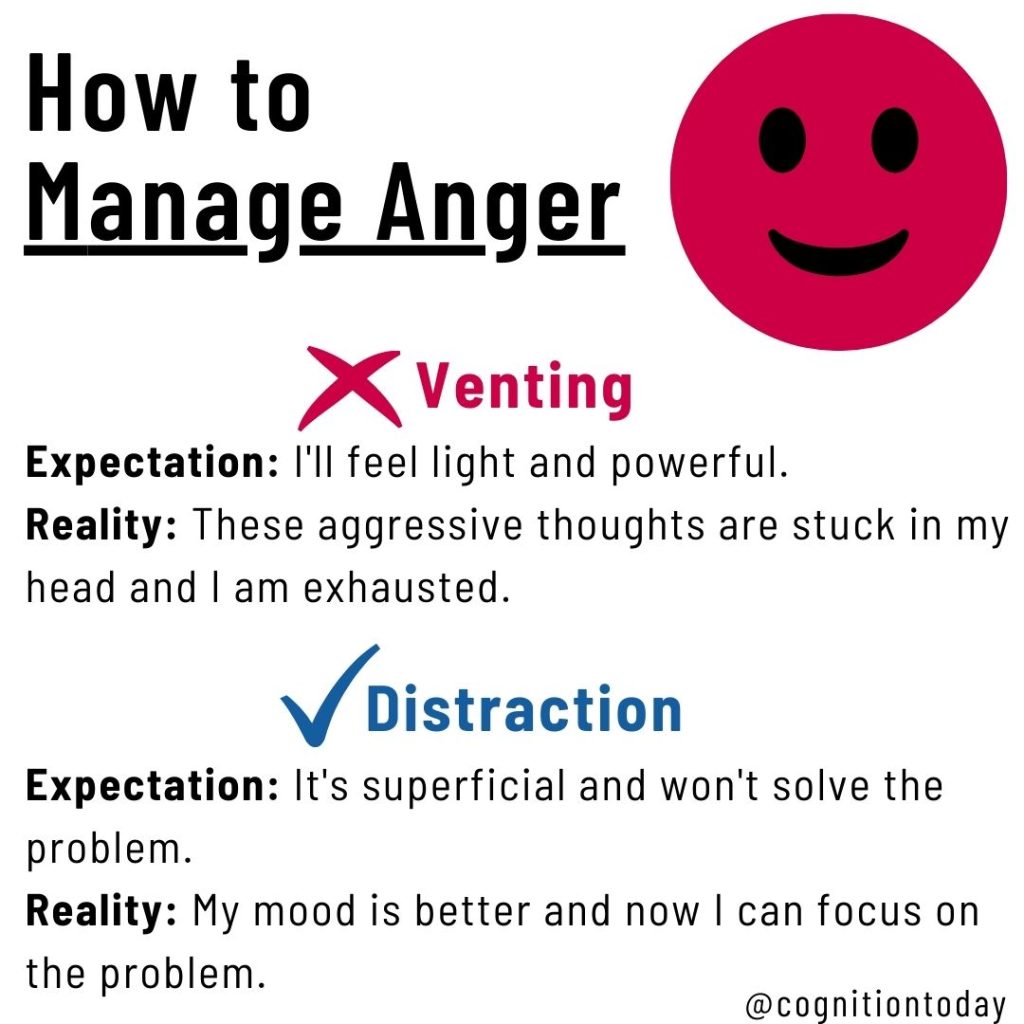
Differences in how people get angry
What’s elegant about the recalibration theory of anger is that it describes and predicts displays of anger in an interpersonal context. Several other factors affect how angry behavior manifests in different people.
Individual level
Researchers describe two types[28] of anger. The first one is state anger – your current level of anger. The second one is trait anger – your default baseline level of anger. If you feel you are always angry, your trait anger is high. If you feel you are angry in specific situations but otherwise calm, your state anger is high. Entitlement is one interesting aspect of anger. Research shows[29] that people who are entitled get angry if they experience bad luck, but not when others experience bad luck.
Social & interpersonal level
From the evolutionary psychology point of view, anger is more of a social dynamic than a precursor of violence, vengeance, hostility, and aggression. Because people have different welfare trade-off ratios for different people, they experience a different level of anger for certain people. The same incident wouldn’t make you angry if it happened with any random person. The social relationship, the expectation, the closeness, the entitlement, and the reciprocity between 2 people determines the welfare trade-off ratio. If someone offsets it, it triggers anger. A pattern of uncontrolled rage with new welfare ratios can become a habit between 2 people.

Anger for others
In friendships, marriages, and even teams, there is a mutual level of empathy and hopes for the collective good. When one person acts in a way that damages the collective good, members of that group may feel anger. In close relationships, we may feel anger toward other people because their action causes harm to themselves or the relationship. In such cases, empathy generates the necessary foundation to feel anger on behalf of someone else. If your friend angers you because they made a grave mistake in spite of knowing better, you experience empathetic anger. One example is getting angry at people you love for taking risks during the coronavirus pandemic. This anger is directed at a person even though it’s only indirectly about your welfare.
Anger toward objects
People form attachments with objects and have expectations from them. For example, you expect your phone, laptop, code to work in a certain way. When they cease to function the way we want them to, we experience anger. So we end-up hitting the keyboard, throwing the phone, kicking the car, shout at Siri and Alexa, etc. A simpler theory of anger and aggression called the “frustration-aggression hypothesis” explains such behavior. We tend to get angry and display aggression when our goals are blocked (frustrated). We ascribe human traits to objects[30] because we get attached to them. Anger may have an abstract layer of empathy that applies to inanimate objects. That might encourage us to modify an object’s behavior by attempting to damage it.
Anger toward the self
Anger can turn inwards beyond self-criticism[31]. It’s called internalized anger. We see it in depression[32]; closely associated with self-deprecation and self-directed dislike: “I hate myself.” This type of anger may be an attempt to recalibrate the self, giving credence to the idea “depression is a battle within oneself.” It may explain why people lose the motivation to live and carry on with their day because negotiating with oneself is a psychologically costly process, and it is inherently a conflict. Being angry at yourself would then mean you want something about yourself to change, but you are not valuing your welfare, so the negotiation would either be an endless loop or a dead-end.
Anger toward the distant others
People express significant proportions of anger toward the more psychologically distant members of our society – governments, politicians, corporations, terrorists, faceless criminals, etc. People deem their actions to neglect the collective welfare leading to low welfare trade-off ratios. Such anger manifests as protests, social media outrage, dissent, etc. Assuming a moral high ground[33] might encourage a need to change others’ behavior via anger. For example, the George Floyd incident left the world shaken with a large amount of anger directed toward the police. The people’s anger was both empathetic anger for those who suffer and a stage 2 anger response to modify the behavior of authorities because everyone’s collective welfare was given low importance.
Sources
[2]: https://www.biblestudytools.com/nlt/james/1-20.html
[3]: https://www.cambridge.org/core/journals/development-and-psychopathology/article/circumplex-model-of-affect-an-integrative-approach-to-affective-neuroscience-cognitive-development-and-psychopathology/9CC3D0529BCFA03A4C116FD91918D06B
[4]: https://www.tandfonline.com/doi/abs/10.3109/01460869509087271?src=recsys
[5]: https://www.sciencedirect.com/science/article/pii/S0149763419302167
[6]: https://psycnet.apa.org/record/2003-06735-003
[7]: https://psycnet.apa.org/record/1983-20910-001
[8]: https://pubmed.ncbi.nlm.nih.gov/21058841/
[9]: https://www.springer.com/gp/book/9789401090087
[10]: https://books.google.co.in/books?id=qqcRGagyEuAC&lr=&source=gbs_navlinks_s
[11]: https://onlinelibrary.wiley.com/doi/abs/10.1002/wcs.154
[12]: https://www.cep.ucsb.edu/papers/2014Sell%20Tooby%20Cosmides_Anger%20face_EHB.pdf
[13]: https://books.google.co.in/books?id=x3TrBwAAQBAJ&printsec=frontcover#v=onepage&q&f=false
[14]: https://www.researchgate.net/publication/318187514_Recalibration_Theory_of_Anger
[15]: https://psycnet.apa.org/record/2010-00584-003
[16]: https://www.the-brights.net/morality/statement_1_studies/DOI/10.1016_j.cognition.2017.06.002.pdf
[17]: https://psycnet.apa.org/record/2014-05396-005
[18]: https://www.researchgate.net/publication/318187514_Recalibration_Theory_of_Anger
[19]: https://www.sciencedirect.com/science/article/abs/pii/S1359178911000656#aep-abstract-id4
[20]: https://pubmed.ncbi.nlm.nih.gov/25363699/
[21]: http://www.craiganderson.org/wp-content/uploads/caa/abstracts/2015-2019/17AA.pdf
[22]: https://www.jstage.jst.go.jp/article/personality/28/3/28_28.3.8/_article/-char/ja/
[23]: https://www.sciencedirect.com/science/article/pii/S0191886920304967
[24]: https://wires.onlinelibrary.wiley.com/doi/abs/10.1002/wcs.154
[25]: https://www.sciencedirect.com/science/article/abs/pii/S0272735816301490
[26]: https://journals.sagepub.com/doi/10.1177/0146167202289002
[27]: https://onlinelibrary.wiley.com/doi/full/10.1111/acps.12953
[28]: https://onlinelibrary.wiley.com/doi/abs/10.1002/9780470479216.corpsy0942
[29]: https://www.sciencedirect.com/science/article/pii/S0191886920304967
[30]: https://guilfordjournals.com/doi/abs/10.1521/soco.2008.26.2.143
[31]: https://www.sciencedirect.com/science/article/abs/pii/S0191886913007526
[32]: https://www.sciencedirect.com/science/article/abs/pii/S0191886996002243
[33]: https://link.springer.com/article/10.1007/s11245-014-9238-7

Hey! Thank you for reading; hope you enjoyed the article. I run Cognition Today to paint a holistic picture of psychology. My content here is referenced and featured in NY Times, Forbes, CNET, Entrepreneur, Lifehacker, about 15 books, academic courses, and 100s of research papers.
I’m a full-time psychology SME consultant and I work part-time with Myelin, an EdTech company. I’m also currently an overtime impostor in the AI industry. I’m attempting (mostly failing) to solve AI’s contextual awareness problem from the cognitive perspective.
I’ve studied at NIMHANS Bangalore (positive psychology), Savitribai Phule Pune University (clinical psychology), Fergusson College (BA psych), and affiliated with IIM Ahmedabad (marketing psychology).
I’m based in Pune, India. Love Sci-fi, horror media; Love rock, metal, synthwave, and K-pop music; can’t whistle; can play 2 guitars at a time.

